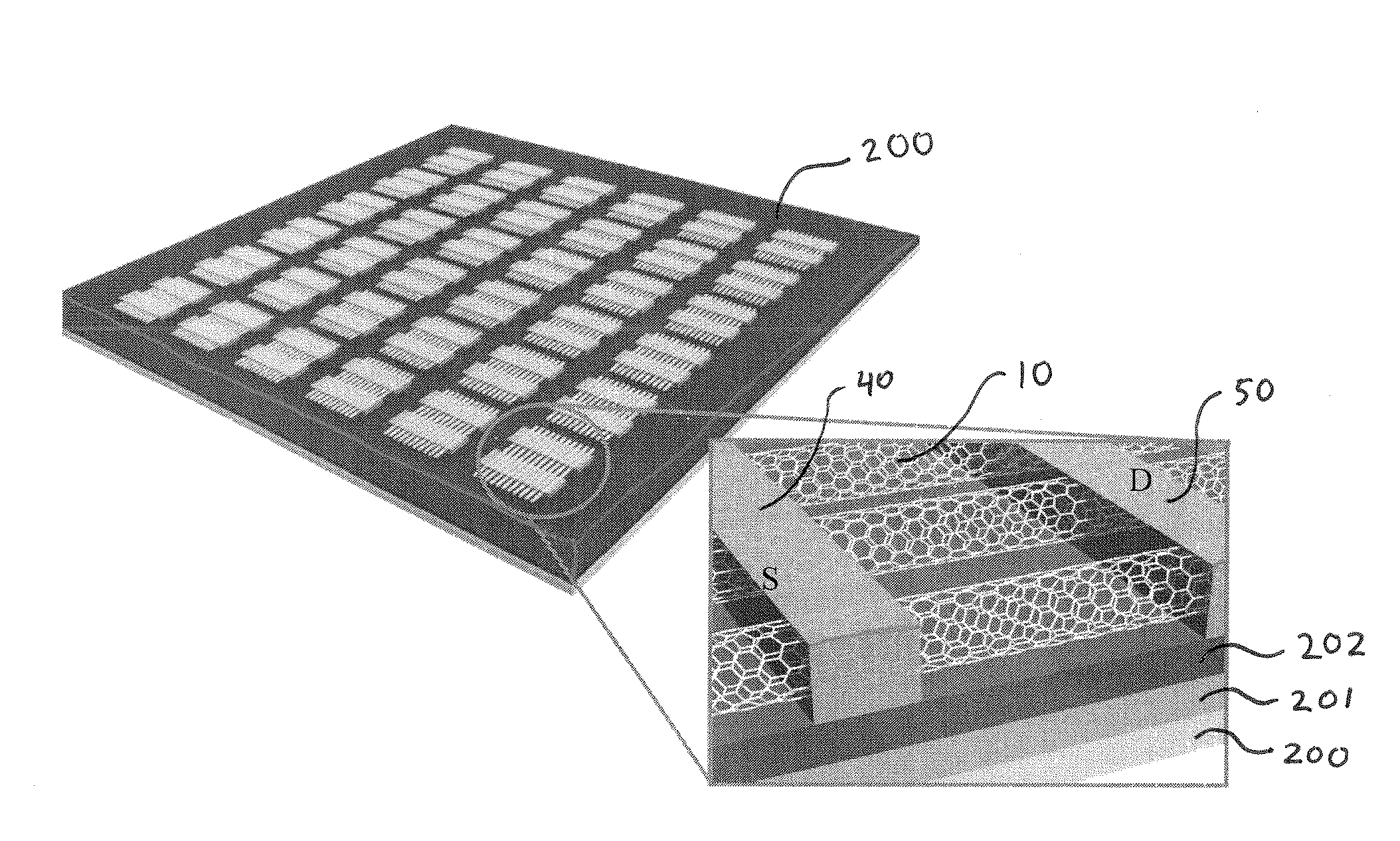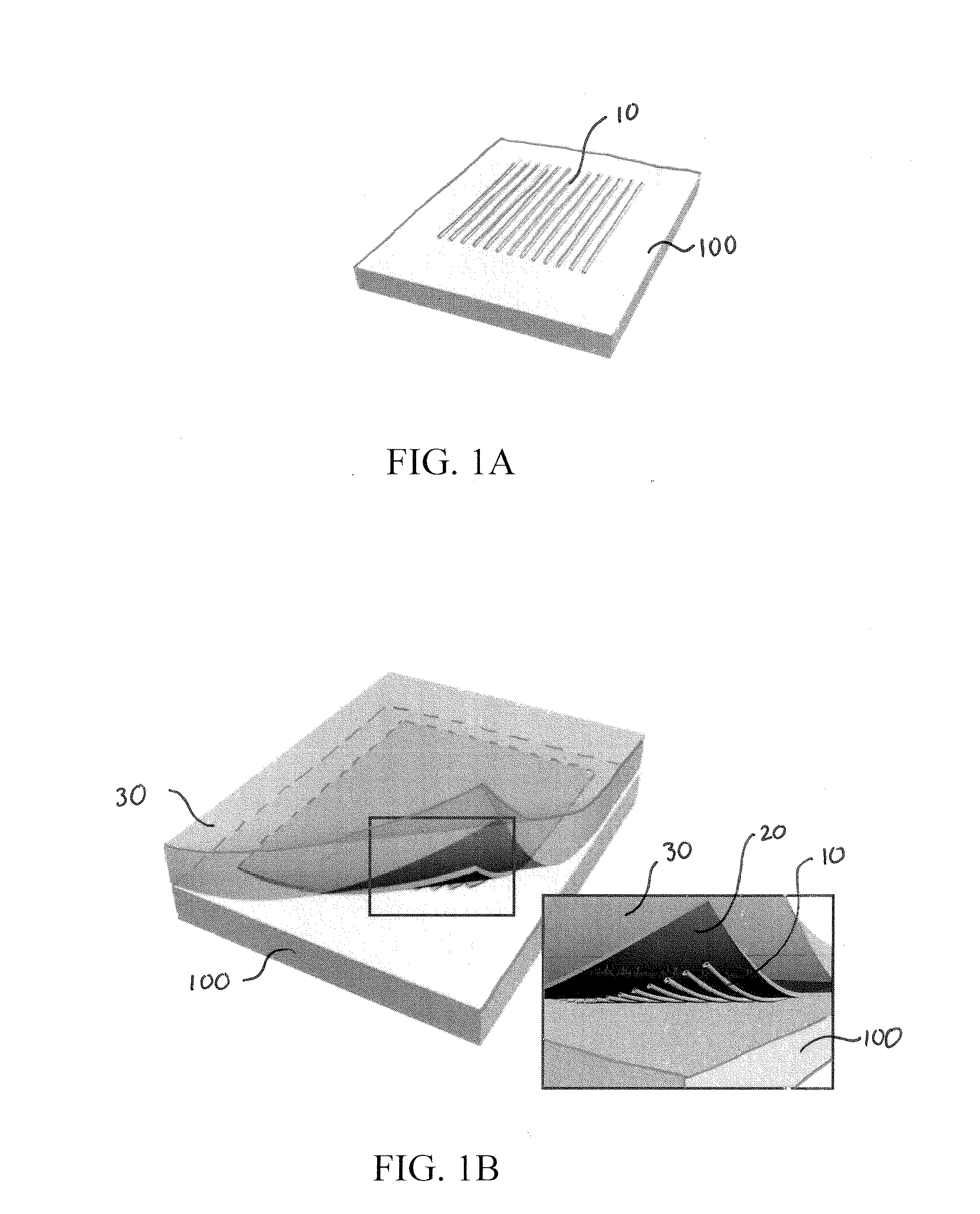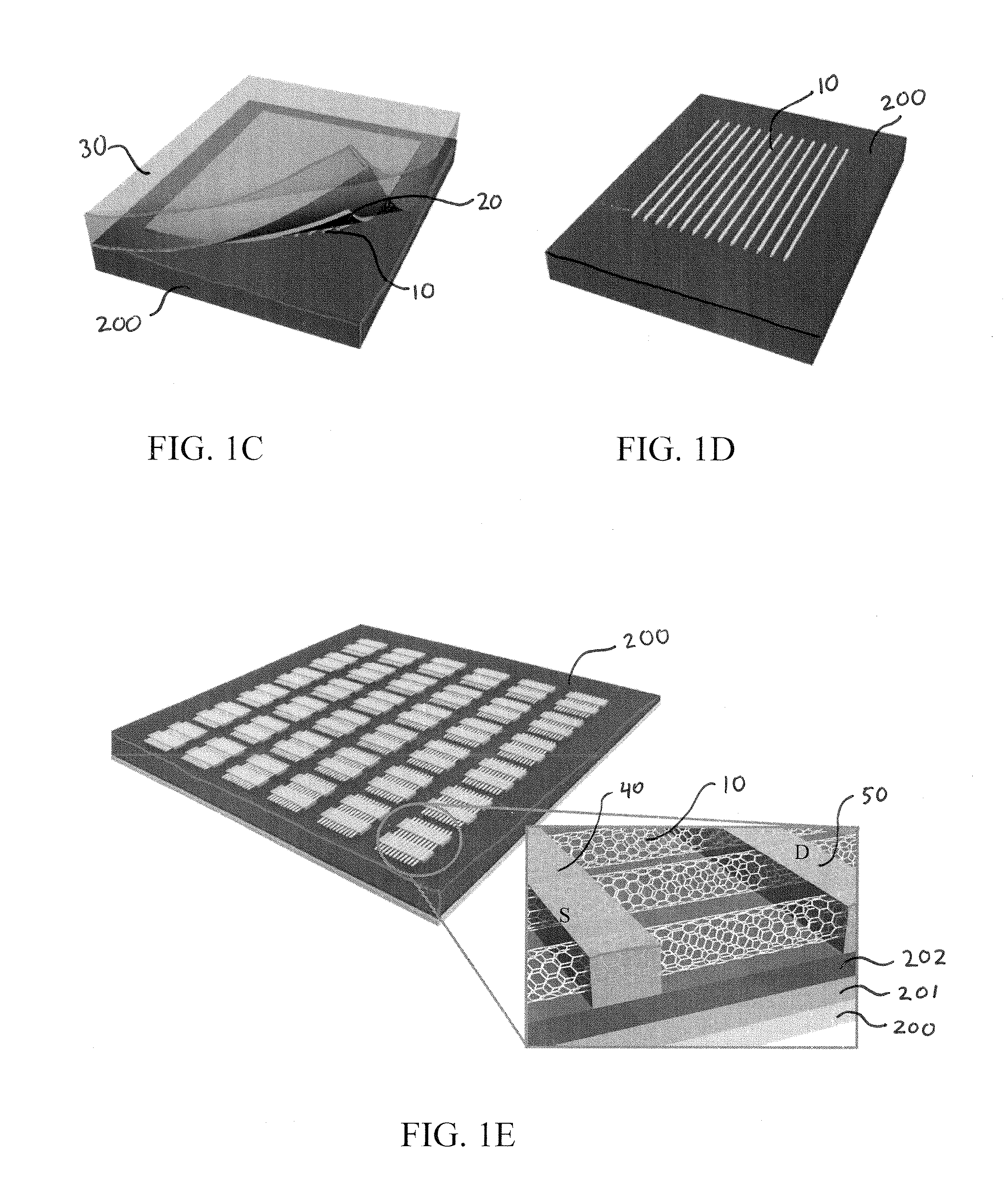Transparent electronics based on transfer printed carbon nanotubes on rigid and flexible substrates
a technology of transfer printed carbon nanotubes and transparent electronics, which is applied in the direction of nanotechnology, electrical equipment, semiconductor devices, etc., can solve the problems of ttfts fabricated in these cases that exhibit rather moderate mobilities, oxide-based ttfts generally limited to n, and the development of high-performance transparent p-type transistors. , to achieve the effect of high carrier mobility
- Summary
- Abstract
- Description
- Claims
- Application Information
AI Technical Summary
Benefits of technology
Problems solved by technology
Method used
Image
Examples
example 1
Fabrication of Transparent Aligned Nanotube Transistors on Glass and PET
[0063]The aligned nanotubes were first grown on quartz substrates using chemical vapor deposition (CVD). For the specific examples, the aligned SWNTs were grown using chemical vapor deposition at 900° C. with gas flow of 2500 sccm CH4, 10 sccm C2H4, and 600 sccm H2. The transfer started by coating as-grown aligned SWNTs on a quartz substrate with a 100 nm thick Au film. The Au film was coated onto the SWNTs by an evaporation process using an e-beam evaporator. Revalpha thermal tape (specifically, #3198M from Nitto Denko), which is adhesive at room temperature but loses adhesion above 120° C., was pressed onto the Au film, and then peeled off slowly, resulting in picking up the nanotube / Au film. The thermal tape / Au film / aligned SWNT film was placed onto a target substrate with an ITO back gate and a SU-8 dielectric layer, and the whole structure was heated up to 130° C. on a hot plate to detach the thermal tape. ...
example 2
Performance of Aligned SWNT TTFTs on Glass
[0067]A glass substrate with an array of devices fabricated in accordance with EXAMPLE 1, above, was used to test the performance of aligned SWNT TTFTs on glass. These transistors have aligned nanotubes as the active channel with channel widths of 10, 20, 50, 100, and 200 μm and channel lengths of 4, 10, 20, 50, and 100 μm. The ITO film on glass was used as the back gate, the 2 μm thick SU-8 was used as the gate dielectric, and the two source / drain contact material structures: 1 nm Au / 100 nm ITO and 100 nm ITO were used for comparison. FIG. 9A shows measured values comparing the transparency of the devices based on the source / drain contact material structures. As shown in FIG. 9A, the devices with Au / ITO contacts had a transmittance of ˜80% in visible light (400˜800 nm). Compared with the devices using only ITO as the contacts, the transmittance decreased about 5% due to the thin Au layer. The performance of the devices having the Au / ITO con...
example 3
Performance of Aligned SWNT TTFTs on PET
[0072]Fully transparent and flexible aligned SWNTs devices using PET substrates were also fabricated in accordance with EXAMPLE 1 to test the performance of aligned SWNT TTFTs on a flexible substrate. For these tests, devices having the ITO back gate, 2 μm thick SU-8 gate dielectric, and ITO source and drain contact material were fabricated. FIG. 10A shows a plot of the transmittance of the transparent, flexible devices. The optical transmission is ˜80% in the 350-1200 nm wavelength range. To evaluate the flexibility of the devices, Ids−Vg measurements were performed under bending of the substrates with different angles and the plots are shown in FIG. 10B. The Ids−Vg curves correspond to a device bended for 0°, 30°, 60°, 90°, and 120°, respectively, with a channel length of 10 μm and width of 200 μm. The transconductance and on-current of the device at each bending angle were extracted from these curves, and were plotted in FIG. 10C. As illust...
PUM
| Property | Measurement | Unit |
|---|---|---|
| transmittance | aaaaa | aaaaa |
| angle | aaaaa | aaaaa |
| width | aaaaa | aaaaa |
Abstract
Description
Claims
Application Information
 Login to View More
Login to View More - R&D
- Intellectual Property
- Life Sciences
- Materials
- Tech Scout
- Unparalleled Data Quality
- Higher Quality Content
- 60% Fewer Hallucinations
Browse by: Latest US Patents, China's latest patents, Technical Efficacy Thesaurus, Application Domain, Technology Topic, Popular Technical Reports.
© 2025 PatSnap. All rights reserved.Legal|Privacy policy|Modern Slavery Act Transparency Statement|Sitemap|About US| Contact US: help@patsnap.com



